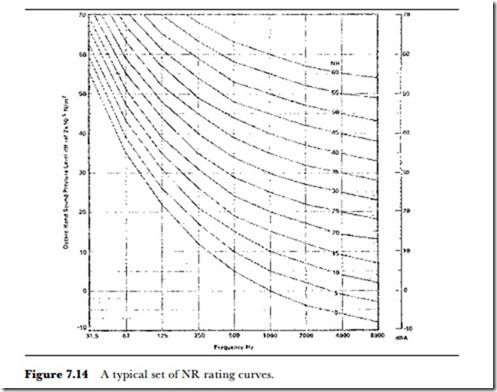Building acoustics
The acoustics of buildings have always been of interest in connection with concert halls and opera houses, theatres and debating chambers, but it has become even more important in the 20th century because of the use of broadcasting studios and public address systems. In addition, the sound quality obtainable from recording media has considerably improved. For example, the 50-60 dB range of the old vinyl disc has been superseded by the 90-100 dB range of the compact disc, although later developments such as MinidiscTM and MP3 have not necessarily been forward steps in range or other aspects of sound quality.
This has made the acoustics of studios much more important, so that defects that once were tolerated can no longer be allowed. In particular, ambient noise levels need to be reduced. This isa process that is particularly difficult at a time when external noise from traffic (particularly air traffic) has greatly increased. At the same time, there has been progress in improving the acoustics of public buildings, including concert halls and theatres, although there is still a tendency to consider the appearance of the architecture long before considering the acoustics. This has the usual effect that a new concert hall may need several years of painstaking work before its acoustics are acceptable. All of this effort might have been saved
if the architect had been aware that fashionable design does not necessarily lead to good acoustics.
Consider one important factor, background noise. At one time a back- ground noise measurement would be used to produce a single figure, but this is no longer sufficient. A background noise assessment now is derived from a set of measurements that take account of the spectrum (the frequency spread) of the noise. This prevents noise at frequencies too low to hear from affecting the noise rating. The systems used for rating noise are NC, used mainly for air-conditioning noise, and NR used, particularly in Europe, for other forms of background noise. Figure 7.14 illustrates a set of NR curves.
REVERBERATION TIME
The reverberation time of an enclosed space is an important factor in deter- mining the quality of sound, and is particularly important for the intelligibility of speech in buildings. The highly reverberant ‘cathedral sound’ is appropriate for some types of music, but disastrous if you want to announce that the train on Platform 7 will be delayed for a couple of days. Cathedrals and similar large spaces can have reverberation times of 4-8 s. Studios designed for orchestral or music recording work need reverberation
times in the range 1.2-2 s, but for pop sounds a lower figure, typically 0.4- 0.7 s is used. Vhere speech intelligibility is important the reverberation time must be less than 1.5 s, and another factor, the percentage loss of consonants (% Alcons), should be measured. This is calculated from measurements of the acoustic quantities D, RT, V, e and M, as defined in Table 7.7. In the past, reverberation time was estimated by methods such as firing a gun and timing the echo return, but much more precise methods are now used, with the sound source and the timing all electronically controlled. Specialist acoustics firms can supply equipment for any measurements ranging from simple reverberation tests to complete analysis of acoustic characteristics.

